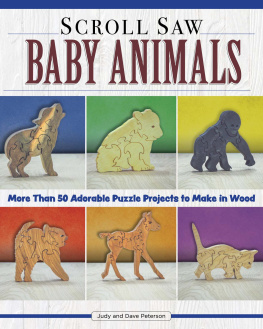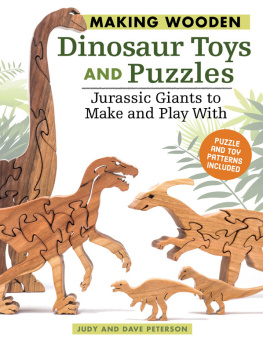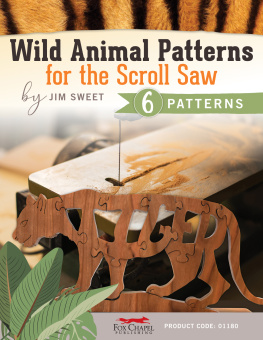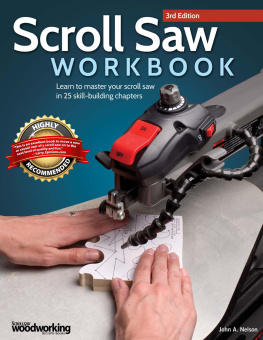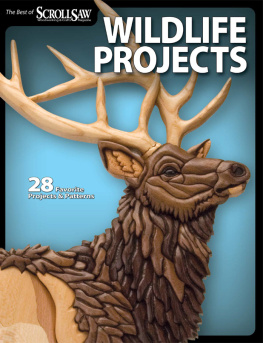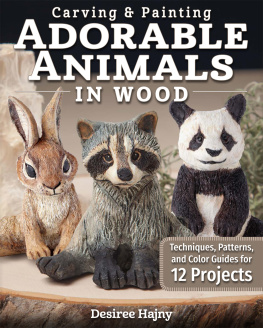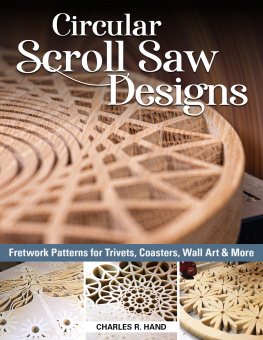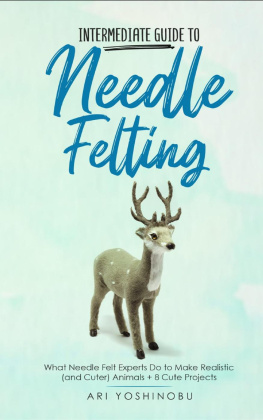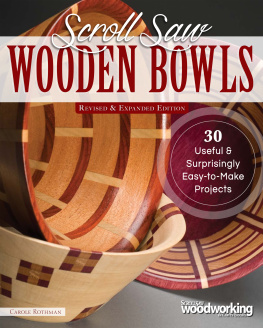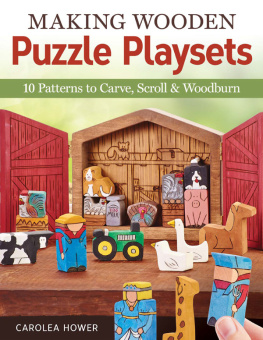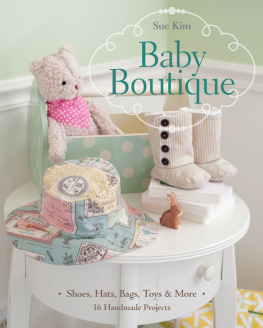Contents
Guide

We dedicate this book to our grandchildren: Owen, Liam, and Aaron Peterson.
PHOTO CREDITS
All photos are by the authors except for the following:
David J. Fisk, front cover; Mike Mihalo, pages .
Additional photos from Shutterstock:
pinyo bonmark, .
2019 by Judy and Dave Peterson and Fox Chapel Publishing Company, Inc., 903 Square Street, Mount Joy, PA 17552.
Scroll Saw Baby Animals is an original work, first published in 2019 by Fox Chapel Publishing Company, Inc. The patterns contained herein are copyrighted by the author. Readers may make copies of these patterns for personal use. The patterns themselves, however, are not to be duplicated for resale or distribution under any circumstances. Any such copying is a violation of copyright law.
Print ISBN 978-1-4971-0054-1
eISBN: 978-1-6076-5736-1
For a printable PDF of the patterns used in this book, please contact Fox Chapel Publishing at , stating the ISBN and title of the book in the subject line.
To learn more about the other great books from Fox Chapel Publishing, or to find a retailer near you, call toll-free 800-457-9112 or visit us at www.FoxChapelPublishing.com.
We are always looking for talented authors. To submit an idea, please send a brief inquiry to .
Table of Contents
Introduction
Why interlocking and freestanding puzzles?
I like puzzles. These days, when Im not making my own puzzles, Im likely to be making them for someone else. I didnt, however, plan to go into business designing and making jigsaw puzzles. I bought a scroll saw because I have always liked wood, and I was fascinated by the scroll saw work I saw at an art show once.
When I began designing my own puzzles in 1990, I decided all of them would be interlocking. The puzzles in this book reflect that decision, meaning that, once you have the puzzles in a standing position, you can pick them up by any piece and turn them completely around without having them fall apart. That doesnt mean that they cant be deconstructed. Make sure you keep your puzzles vertical and dont tip them!
The first thing I cut out when I brought home my first scroll saw was a three-piece rabbit. As a woodworker of long standing, I used the lumber I had in my workshop. It was an old piece of 1 x 4 (2.5 x 10cm) pine. One of the things I liked about the puzzle was that it was thick enough to stand. The concept of a freestanding puzzle stayed with me as I moved on to using hardwoods.
Why animals?
Like everyone else I know who bought a scroll saw, I started with patterns from books. The first few original designs I did were of dinosaurs, followed by a few dragons, then a few animals, and whatever struck my fancy. Deciding what to design next got easier once I started selling my puzzles; thats because customers told me what their interests were. (If youre going to design a new puzzle, you might as well design one that people will want to buy.) My customers ask for animal puzzles a lot, which reinforced my own interest in them. My own interests combined with my customers requests made a powerful reason for designing new animal puzzles.
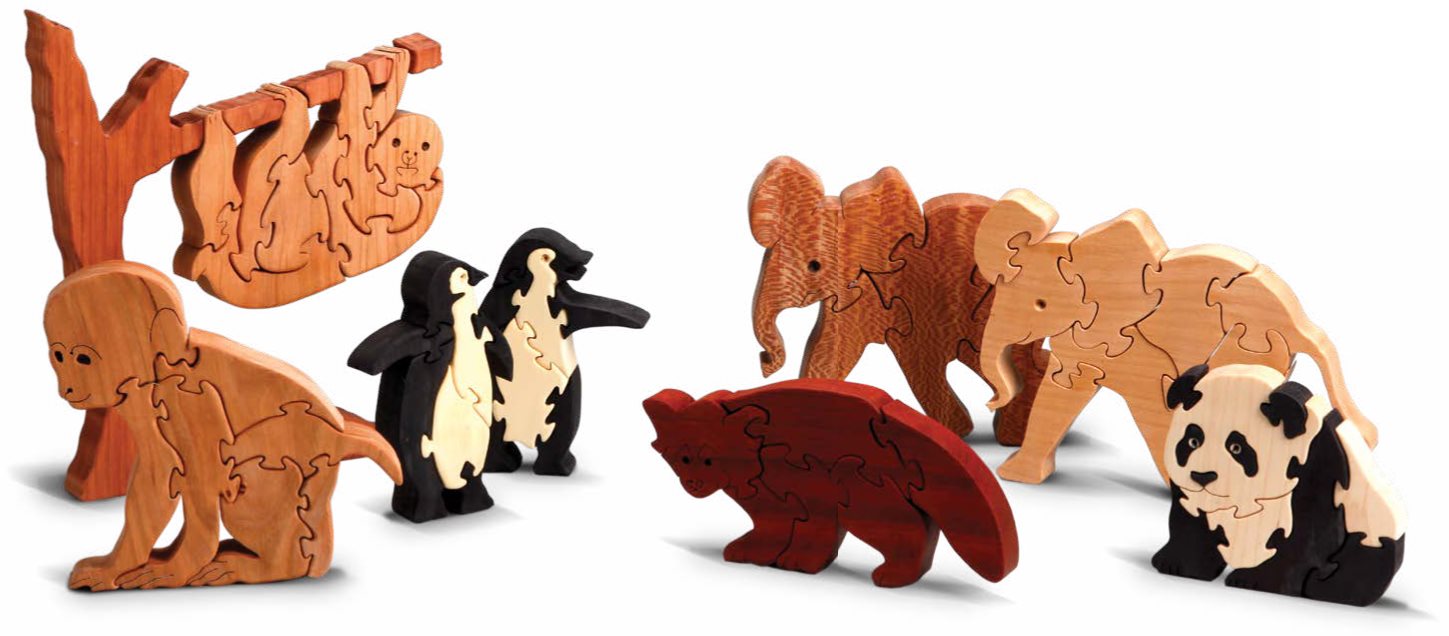
Why hardwoods?
Theyre naturally beautiful. As a lover of hardwoods, I have a natural aversion to painting them. Theyre beautiful in their own right. Besides that, hardwoods occur naturally in wide variety of colors. Why cut a jaguar out of piece of pine and then paint it, when you can cut it from wood that comes complete with spots (see )?
The harder the wood, the less chip-out you get. The structure of hardwoods is more uniform. Uniform density makes your cutting more consistent. Youll spend less time overall and end up with a more pleasing result.
The increased density also results in a surface that can be more easily sanded smooth. To repeat something we said in our previous books, silky means sales at an art show. This means that customers are more likely to purchase your pieces if the wood is as smooth as silk.
Selecting a Board
Before you can cut a puzzle out, of course, you must select the board you want to use. Examine it carefullyboth top and bottomlooking for bad spots, including checks, knot holes, and obvious internal cracks. Mark these flaws on the top of the board. I use a wide black permanent marker for this task. Make a copy of your pattern, and place it on the board, avoiding the bad spots.
Where can you buy hardwoods?
Do a search on the Internet for hardwood lumber dealers. Dont forget to ask your woodworking friends and check out the ads in your favorite scroll sawing or woodworking magazine. Also, see for a list of dealers we have used.
How do you choose for color and cutting characteristics?
I try to choose woods that are suitable for the item being cut. For instance, polar bears only come in white, so I cut them from aspen. I also pay attention to my customers. Squirrels almost always sell best in black walnut. Evidently most people think thats the right color for squirrels.
Almost every puzzle has a wood in which it sells best. If I know that I havent found the perfect wood for a particular pattern, that knowledge keeps me searching for new and wonderful woods.
Most of my puzzles are cut in native North American hardwoods that are locally available in limited quantites. Cherry, walnut, and maple are widely available. Cherry appears to be the wood of choice (at the moment), but walnut is gaining in popularity. Maple is less popular (parents dont want to buy light-colored toys for small children). I also use a smaller amount of butternut, aspen, and catalpa. These woods are locally available in limited quantities.
I have found that quarter-sawn sycamore is very attractive for many animals. It is especially effective for solid black animals because the flake pattern shows through the dye.
From time to time I find sweet gum, mesquite, sassafras, and other regionally grown woods. All of these woods have advantages and disadvantages.
Many truly beautiful woods are too hard (or almost too hard) to cut with a scroll saw. Most of these woods are exotics. When I run across a new species, I pick up a board to test it. If its heavier than a similar sized board of hard maple, I put it back.
I always look at every board I buy. I focus on color and figure. I want the richest color for that species, and I want any figure I can findwavy, quilted, fiddle back, or whatever. (If youre not familiar with lumberspeak, see the puzzles. I like placing my pattern on the wood in such a way that it takes advantage of the color differences. My customers like the result too!
The biggest disadvantage of hardwoods is price. Most hardwoods are more expensive than many softwoods. On the opposite side, you dont have to buy 87 kinds of paint like you would with softwoods. You also dont have to spend the time to paint them (or the time learning to paint!). The biggest advantage of hardwoods is beauty. With careful selection (Id rather spend time and money in a lumberyard than in an art supplier), you can produce a really good-looking puzzle.

